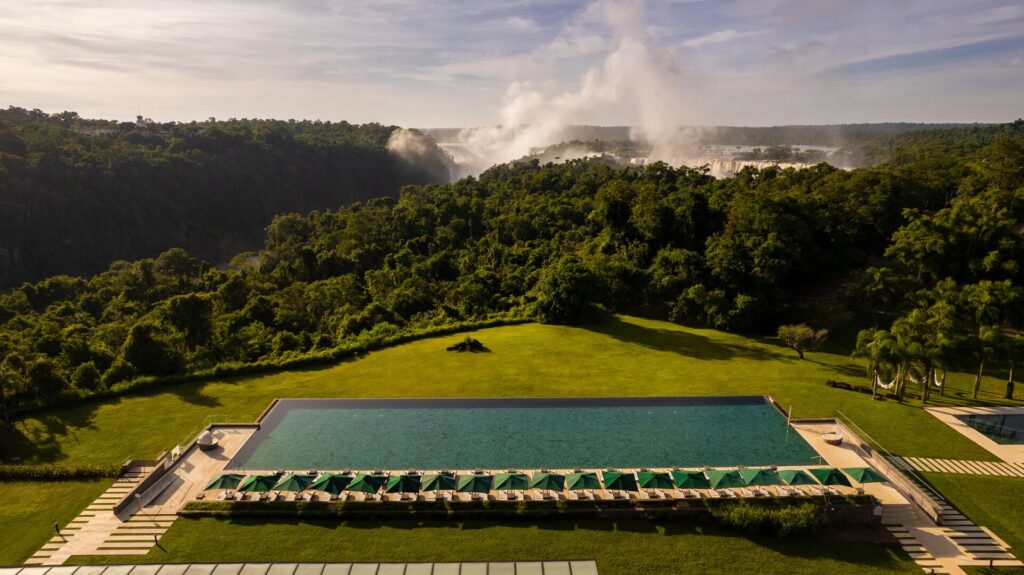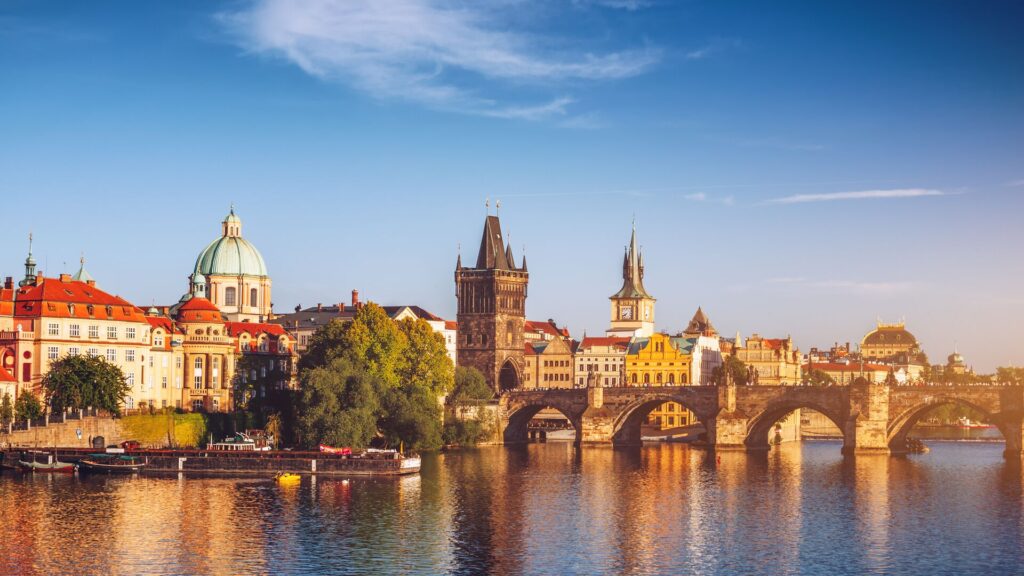Everything You Need to Know About Iguazu Falls
The largest waterfall system in the world, Iguazu Falls is an incomparable natural wonder that spans both Brazil and Argentina. Flowing from the Iguazu River, there are 275 waterfalls within Iguazu (the name literally means ‘big water’ in the indigenous Guaraní language) and we believe nothing can truly prepare you for seeing them up close in all their glory – Iguazu Falls is wider than Victoria Falls and taller than Niagara Falls (though Victoria takes the title as the largest waterfall in the world, as it’s just one single sheet of water).
But being across two countries, covering a large area of land, and opposing opinions as to which side is ‘best’, you may have some questions. Here’s everything you need to know about Iguazu Falls before you go to South America.
See it for yourself on Contrasts of Brazil & Argentina
Where is Iguazu Falls?
Stretching for 2.7 km (1.7 mi), Iguazu Falls straddles Argentina and Brazil and is protected within each country’s respective Parque Nacional: Iguazu National Park in the Argentinean province of Misiones, and Iguaçu National Park in the Brazilian state of Paraná. Both sides of the falls are UNESCO World Heritage Sites.
But it’s not quite an equal split – 80% of the waterfalls are located on the Argentine side, though that’s not us saying either side is better or worse. More on that below.

During rainy season, Iguazu’s water volume can increase 7.5 times up to 3.4 million US gallons every second!
How to get to Iguazu Falls?
How you get to Iguazu Falls depends on which side you’re visiting. From Argentina, it’s best to fly into Cataratas del Iguazú International Airport (IGR) which is 0 km (6 miles) from the Argentinian entrance, while from Brazil you’ll want to fly to Foz do Iguaçu/Cataratas International Airport (IGU), which is just 3 km (2 miles) from the Brazilian entrance.
When you travel with Insight Vacations, you’ll spend two nights right in the heart of the action at the only hotel located inside Iguazú National Park: Gran Meliá. You can even see the falls from your hotel. On your first day your Local Expert will take you to explore the Argentinian side of Iguazú Falls, following a network of trails and walkways leading you to the roaring Devil’s Throat.
After breakfast overlooking the rainforest canopy, on your second day you’ll cross into Brazil with your Local Expert for a guided visit to the eastern side of the falls where can see the entire waterfall system at once, including San Martin Island, from panoramic viewing platforms.

The view from the Gran Melia hotel, where you’ll stay with Insight Vacations
Is it better to visit Iguazu Falls in Argentina or Brazil?
An age-old question, and one that’s completely subjective. You can only find out which side of Iguazu Falls you think is best by visiting, but here is what each side has to offer.
As 80% of the waterfalls are found on the Argentinian side you can walk among or above the falls, feel the spray on your skin and even touch them. This is the side to be on if you want to feel the power of the water, and with more pathways there are more options for your visit.
However, on the Brazilian side you can see the scale and grandeur of the falls with magnificent 360º panoramic views. There is just one pathway on the Brazilian side, and at the end of the trail there is a glass elevator that takes you high above the system for incredible views of the falls.
The Argentinian side also boasts the iconic Devil’s Throat, the largest waterfall within the system spanning nearly 500 feet (150 meters) in width and an impressive height of 269 feet (82 meters). The U-shaped waterfall actually holds 14 separate falls within.
It’s certainly advisable to witness both sides of Iguazu Falls as each has distinctly different draws. If you can only visit one, then you can ask yourself: do you prefer to see the show, or be immersed in it?
Save up to $3,000* per couple on your first Premium Tour
Plus receive latest offers, travel inspiration, and discover how your travels will make a positive impact. Together, WE MAKE TRAVEL MATTER®. Subscribe NowWhat are the best things to do in Iguazu Falls?
Jaw-dropping views are around every corner at Iguazu Falls, but there are a few highlights that you just can’t miss.
On the Argentinian side, the aforementioned Devil’s Throat (known as Garganta del Diablo) is a must-see, but this is also the most popular trail in the park so we’d recommend going early to avoid large crowds.
There are plenty of trails on the Argentinian side, but two main ones: the Upper Circuit (Circuito Superior) and the Lower Circuit (Circuito Inferior). As the name suggests, Upper Circuit is the one to take if you want panoramic views of the falls from above. This is also a flatter path, around 1.75 km (1.1 miles) long and generally taking less than an hour to complete.
Meanwhile, Lower Circuit is where the action takes place. This route takes you much closer to the falls, so waterproofs and ponchos will be needed. It’s a little more demanding with some inclines and stairs across 1.4 km (0.9 miles), taking around 1.5 to 2 hours to complete (account for extra time while you stop and take in the view). The good news is you don’t need to pick just one – it’s perfectly manageable to do both circuits in one day!
If you’d like to explore beyond the water, take the Green Trail (Sendero Verde). It’s guaranteed to be quieter, and it’s a short detour that takes around 10 minutes. Here you’ll see some of the wildlife that calls the park home, such as toucans, lizards, magpies, monkeys, coatis (give them a wide berth) and even alligators.
There are fewer trail options on the Brazilian side of Iguazu, but following the footbridge that takes you out over the gushing water will lead you to one of the best views of Devil’s Throat, allowing you to see it from a different perspective. The main walkway is fairly flat and around 1.5km, with plenty of viewpoints along the way. The end of the trail gives you a chance to take in the magnificent views while out on a platform that stands directly over the water, where you’ll bask in the mist of the falls

The number of waterfalls in Iguazu can vary throughout the year, ranging from 150 to 300 falls depending on season and water levels.
When is the best time to visit Iguazu Falls?
Iguazu Falls is impressive throughout the year, though certain seasons will suit certain priorities – whether that’s seeing the falls at their fullest, avoiding large crowds, or getting the best of the weather.
Brazilian summer runs between December to February, and while this is the rainier season it’s also the time when the falls will be at their maximum capacity. You’re still likely to see some sun (temperatures can still reach highs of 88ºF (31ºC)), just become prepared for a few showers – though if you’re planning on getting up close to the falls, you’ll need your waterproofs anyway!
If you want to avoid any rain then April to September are the driest months and much cooler meaning you avoid the oppressive humidity of the summer. Remember that June to August is also the winter season, so come prepared with warm layers and a jacket for the evenings when the temperature can dip to around 50ºF (10ºC), though the days are still balmy with highs of 73ºF (23ºC).
Iguazu Falls is busiest during January and February (the local summer holidays), April (Easter), and in July (the local winter break). During local holidays, visiting Iguazu on weekdays will be a little quieter.
What movie was filmed at Iguazu Falls?
Think you recognize the falls? You’ve probably spotted them in a few Hollywood hits, from Miami Vice (2006) to Indiana Jones and the Kingdom of the Crystal Skull (2008), and most recently Paddington 2 (2017) and Black Panther (2018).
Discover the wonder of Iguazu Falls on a premium Insight Vacations Contrasts of Brazil & Argentina tour.

LIKED THIS POST? SHARE WITH YOUR COMMUNITY



